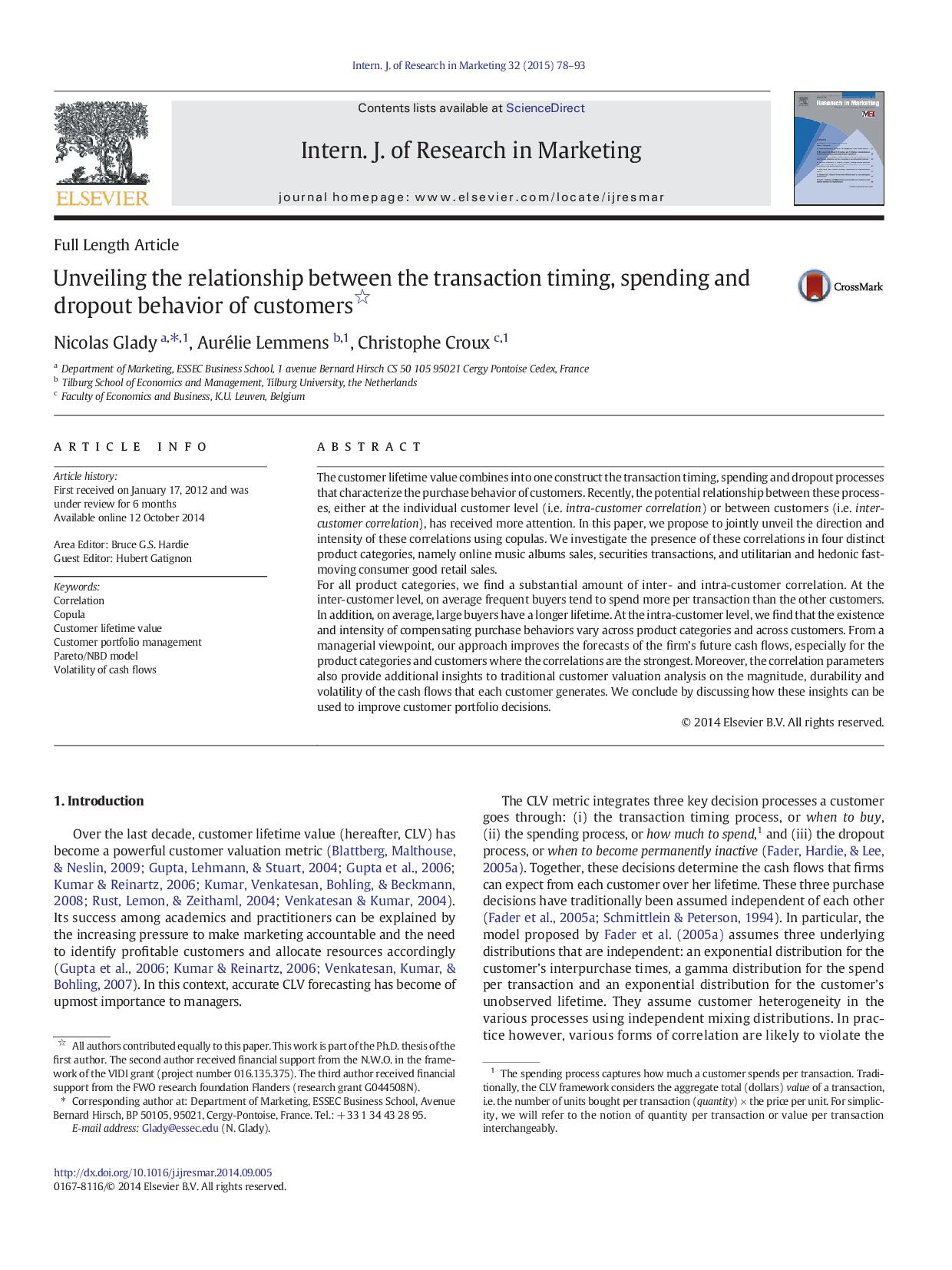Unveiling the Relationship between the Transaction Timing, Spending and Dropout Behavior of Customers
The customer lifetime value combines into one construct the transaction timing, spending and dropout processes that characterize the purchase behavior of customers. Recently, the potential relationship between these processes, either at the individual customer level (i.e. intra-customer correlation) or between customers (i.e. inter-customer correlation), has received more attention. In this paper, we propose to jointly unveil the direction and intensity of these correlations using copulas. We investigate the presence of these correlations in four distinct product categories, namely online music albums sales, securities transactions, and utilitarian and hedonic fast-moving consumer good retail sales.
For all product categories, we find a substantial amount of inter- and intra-customer correlation. At the inter-customer level, on average frequent buyers tend to spend more per transaction than the other customers. In addition, on average, large buyers have a longer lifetime. At the intra-customer level, we find that the existence and intensity of compensating purchase behaviors vary across product categories and across customers. From a managerial viewpoint, our approach improves the forecasts of the firm’s future cash flows, especially for the product categories and customers where the correlations are the strongest. Moreover, the correlation parameters also provide additional insights to traditional customer valuation analysis on the magnitude, durability and volatility of the cash flows that each customer generates. We conclude by discussing how these insights can be used to improve customer portfolio decisions.

